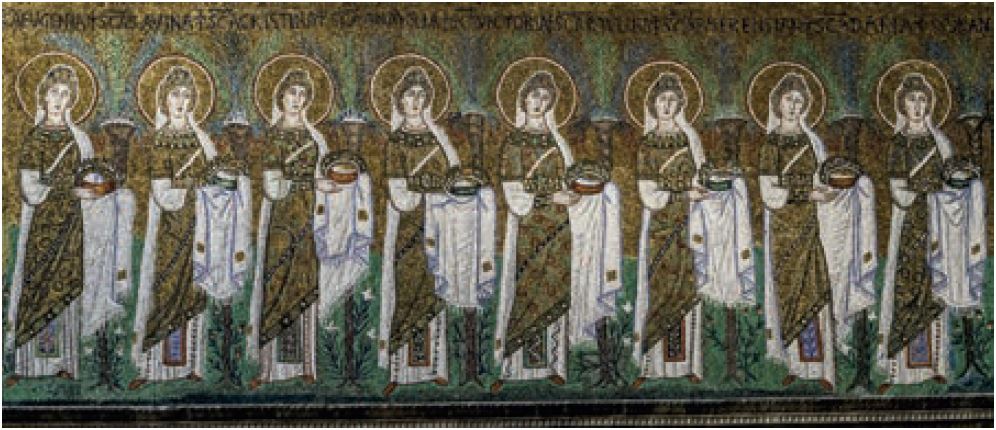Communion of Saints
Publish date 14-12-2020
In Orthodox churches, icons make visible the invisible world with which the faithful put themselves in communion through prayer: the kingdom of heaven, heaven. But there are examples of this also belonging to the Byzantine world. One above all is the mosaic decorations of the basilica of Sant'Apollinare Nuovo.
Along the central nave of the church the side walls are decorated with three horizontal bands of mosaics: the first, higher and narrower, which shows scenes from the life of Christ, on the left parables and miracles and on the right the main events of the passion, death and resurrection (it is the oldest cycle of New Testament scenes we have in mosaic); the central band, larger in size, interspersed with windows, is occupied by majestic figures of prophets. While the lower band, decidedly more spacious in height than the other two, depicts two long processions: on the left a sumptuous saints, and on the right that of the martyrs. These are the most recent mosaics, rebuilt in the Byzantine period. The saints are 22, they all wear a crown symbol of their belonging to the celestial court for their virtues and love for Christ, and they walk rhythmically spaced apart, towards the Mother of God who holds the baby Jesus in her arms between four angels , depicted near the apse.
There are 26 martyrs, wrapped in white robes, symbol of purity washed in blood, they are facing the enthroned Redeemer - also depicted among the angels - placed in front of the Mother. Together the two processions invite the faithful to advance into the church and to come forward towards the altar, towards the encounter with the Most High God who became a child, became man to definitively eliminate the distance with his creatures, his children , destined to live in Love with him, in infinite joy, in the wholly spiritual richness of God: a richness and superabundance of love, of grace, of mercy, of wisdom ...
Here is a large, imposing image, which has passed the centuries and still speaks to us of communion, of people who find themselves deeply together even without having known each other, but deeply together and united for having loved the same Love, having suffered for the same. Well, having believed in the same Hope, having given your life for the same God and the same Person: Jesus.
Chiara Dal Corso
NP ottobre 2020








